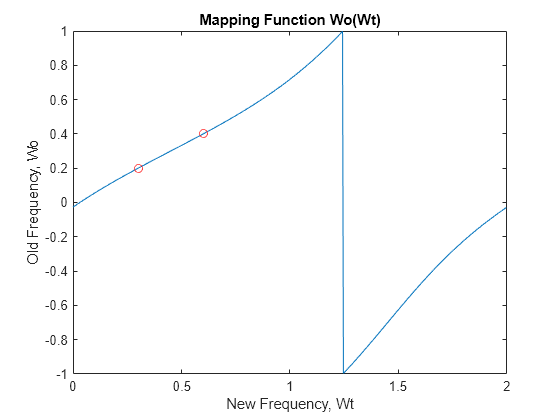allpassbpc2bpc
Allpass filter for complex bandpass transformation
Description
[
returns the numerator, AllpassNum,AllpassDen] = allpassbpc2bpc(Wo,Wt)AllpassNum, and the denominator,
AllpassDen, of the first-order allpass mapping filter for performing
a complex bandpass to complex bandpass frequency transformation. For more information, see
Complex Bandpass to Complex Bandpass Frequency Transformation.
Examples
Input Arguments
Output Arguments
More About
Version History
Introduced in R2011a
